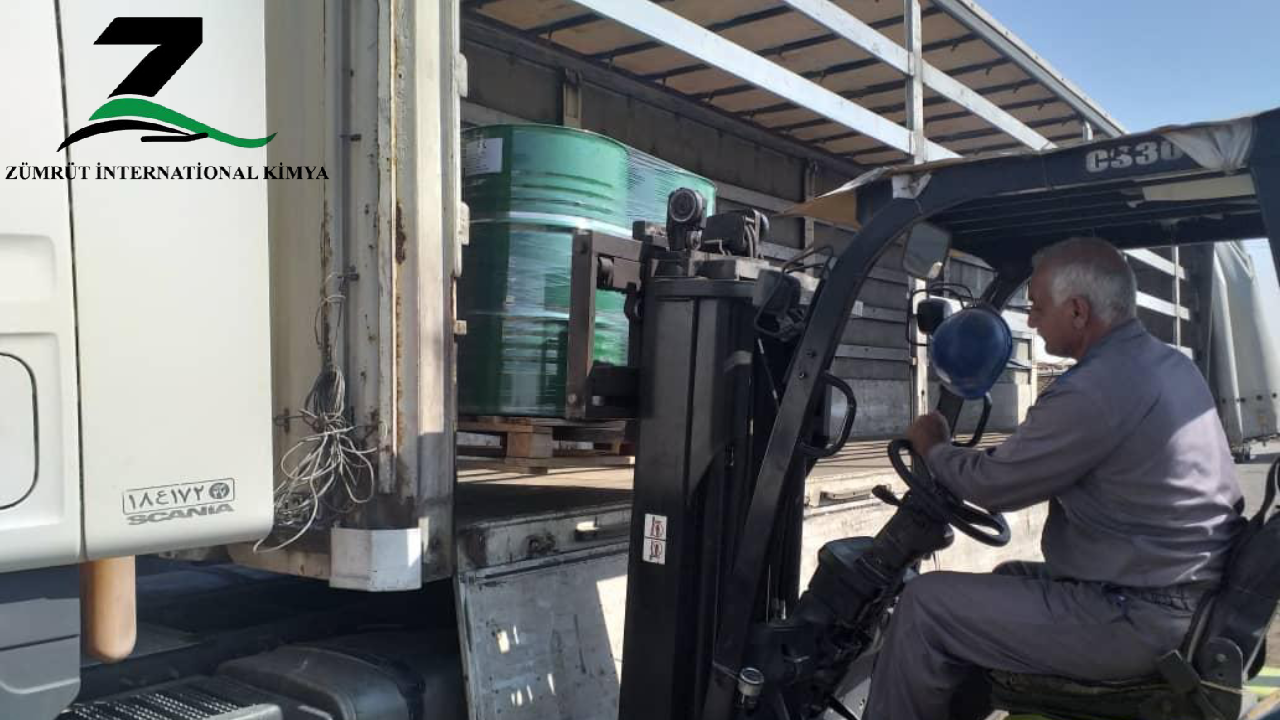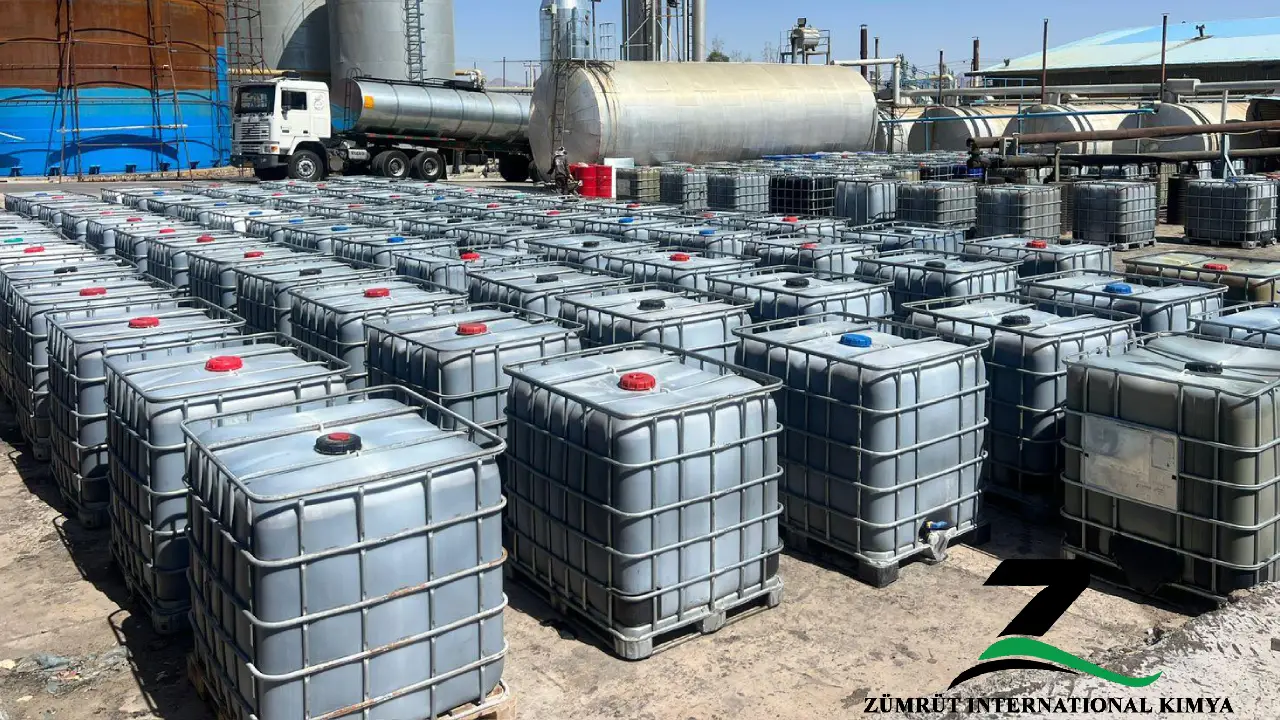
Anionic Bitumen Emulsion RS-2 Definition
Anionic Bitumen Emulsion RS-2 is a rapid setting, anionic, bitumen emulsion.
For anionic and emulsions, there are several grades of different breaking characteristics. Rapid-setting emulsions are used for surface dressing, while medium or slow-setting emulsions are used for ‘mixtures’, that is mixed with aggregate either in concrete-type mixers or in situ. Rapid-setting emulsions are not used for mixtures because they would tend to set during the mixing process and clog the mixer. Generally, in making mixtures, the finer the aggregate used, the slower setting the emulsion that has to be used. Therefore, stone mixtures require medium-setting emulsions and sand mixtures require a slow-breaking emulsion. With anionic emulsions, the breaking process is predominantly by evaporation of the water in the emulsion continuous phase. Because of this, anionic emulsions are susceptible to temperature and humidity in terms of their breaking properties.
An Anionic emulsion has a negative charge, most of the things in the world are Anionic and that is why the majority of Research and Development, formulating, and lab testing has been done in the Industrial Coatings Industry to make coatings from Anionic systems. When an Anionic emulsion is mixed with a Cationic emulsion a strong bond develops and the result is the changing of the substance to a solid. This result is not ideal to be used as a coating because it cannot be applied to substrates.
Anionic bitumen emulsions RS-2 Applications
Anionic bitumen emulsion RS-2, similar to RS-1, is widely used in road construction and maintenance. Its applications include:
- Prime coating: RS-2 emulsion is applied as a prime coat to prepare the base surface before laying asphalt layers. It helps improve adhesion between the existing pavement and the new asphalt layer, enhancing the overall stability and durability of the road.
- Tack coat: As a tack coat, RS-2 emulsion promotes adhesion between asphalt layers, ensuring a strong bond and preventing delamination or separation of pavement layers over time.
- Surface treatment: RS-2 emulsion can be used for surface treatments such as chip sealing and slurry sealing to rejuvenate and protect existing pavements. It helps seal small cracks, improve surface texture, and extend the lifespan of the road.
- Patch repair: RS-2 emulsion is commonly used for patching and repair of localized pavement distress, such as potholes and cracks. It provides a durable and cost-effective solution for maintaining road surfaces in good condition.
- Pavement preservation: By applying RS-2 emulsion as part of a pavement preservation program, agencies can extend the service life of roads and reduce the need for costly rehabilitation or reconstruction projects.
The difference between asphalt emulsion RS-1 and RS-2
The main difference between asphalt emulsion RS-1 and RS-2 lies in their respective applications and properties:
Application: RS-1 and RS-2 emulsions are both used in road construction and maintenance, but they are typically applied in different stages of the construction process and for different purposes.
– RS-1: Primarily used for prime coating, tack coating, surface treatments, and patch repair. It is often applied before laying asphalt layers to improve adhesion and stability.
– RS-2: Also used for prime coating and tack coating, but it is commonly applied in chip sealing, slurry sealing, and other surface treatments. RS-2 is often chosen for projects where a thicker application is required or where greater durability is needed.
Viscosity: RS-1 and RS-2 emulsions may have different viscosities, with RS-2 typically having a higher viscosity compared to RS-1. This difference in viscosity affects the handling, application, and performance characteristics of the emulsions.
Emulsion Properties: RS-1 and RS-2 emulsions may have variations in their composition and formulation, including factors such as particle size distribution, residual asphalt content, and emulsifier type. These differences can influence the emulsion’s ability to coat and bind aggregate particles, as well as its curing and adhesion properties.
Advantage of Asphalt Emulsion RS-2
Asphalt emulsion RS-2 offers several advantages in road construction and maintenance:
- Enhanced Durability: RS-2 emulsion provides a thicker coating compared to RS-1, resulting in improved durability and resistance to wear and weathering. This makes it suitable for applications where greater longevity is required, such as chip sealing and slurry sealing.
- Improved Waterproofing: The thicker application of RS-2 emulsion helps enhance waterproofing properties, reducing the ingress of moisture into the pavement structure and minimizing damage caused by water-related deterioration, such as cracking and rutting.
- Greater Stability: RS-2 emulsion forms a stable bond between asphalt layers, resulting in enhanced pavement stability and resistance to rutting, stripping, and other forms of distress. This makes it ideal for use in high-traffic areas and roads subjected to heavy loads.
- Versatility: While RS-2 emulsion is commonly used for chip sealing and slurry sealing, it can also be applied for prime coating and tack coating, offering versatility in various stages of road construction and maintenance projects.
- Cost-Effectiveness: Despite its thicker application, RS-2 emulsion remains a cost-effective solution for pavement preservation and rehabilitation projects. Its ability to extend the service life of existing pavements and reduce the need for more extensive repairs or reconstruction can result in long-term cost savings.
- Environmental Benefits: RS-2 emulsion typically contains fewer volatile organic compounds (VOCs) compared to hot-mix asphalt, reducing environmental impact and improving air quality during application.
Packing of Asphalt Emulsion RS-2
- Bulk as IBC Tank, Flexi Tank
- Reconditioned steel drums 220 lit., Net Weight: 200 ± 3 Kg
- New steel drums 220 lit., Net Weight: 200 ± 3 Kg
- HDPE drums 220 lit., Net Weight: 200 ± 3 Kg
Packaging, Storage and Handling RS-2
When it comes to the packaging, storage, and handling of asphalt emulsion RS-2, similar guidelines apply as with RS-1, but there might be slight variations based on specific product characteristics. Here’s a general guide:
- Packaging: RS-2 emulsion is typically packaged in drums or bulk containers similar to RS-1. The packaging should be sturdy and sealed properly to prevent leaks or spills during transportation and storage.
- Storage: Store RS-2 emulsion in a covered area away from direct sunlight and extreme temperatures. The recommended storage temperature is usually between 10°C and 30°C (50°F to 86°F). Ensure proper ventilation to avoid the buildup of volatile gases.
- Handling: Handle RS-2 emulsion with care to prevent spills and splashes. Use appropriate personal protective equipment, including gloves and goggles, to protect against skin and eye contact. Wash thoroughly with soap and water if contact occurs.
- Mixing: Before use, gently agitate or mix the emulsion to ensure uniform consistency. Avoid excessive agitation, as it can cause air entrapment and affect the performance of the emulsion.
- Transportation: Secure the containers properly during transportation to prevent shifting or tipping. Follow all regulations and guidelines for the transport of hazardous materials, as RS-2 emulsion may be classified as such due to its flammable properties.
- Storage duration: RS-2 emulsion should be used within the recommended shelf life to prevent degradation. Check the manufacturer’s specifications for the storage duration and conditions to maintain product quality.

T.D.S of Anionic Bitumen Emulsion RS-2
| PROPERTY | MIN | MAX | TEST METHOD |
| Saybolt fural Viscosity@ 50 °C (s) | 75 | 400 | ASTM D244 |
| Storage stability, 24h (%) | 1 | ASTM D6930 | |
| Particle charge test | Minus | ASTM D244 | |
| Demulcibility, 35ml, 8% dioctyl sodium sulfosuccinate, % | 60 | — | ASTM D6936 |
| Sieve (%) | 0.1 | ASTM D6933 | |
| Residue by distillation (%) | 65 | ASTM D244 | |
| Penetration, 25 °C, 100g, 5Sec | 100 | 200 | ASTM D5 |
| Solubility in trichloroethylene % | 97.5 | — | ASTM D2042 |
| Residue ductility, 25 °C, 5cm/min (cm) | 40 | ASTM D113 |
Specification of Anionic Bitumen Emulsion RS-2



